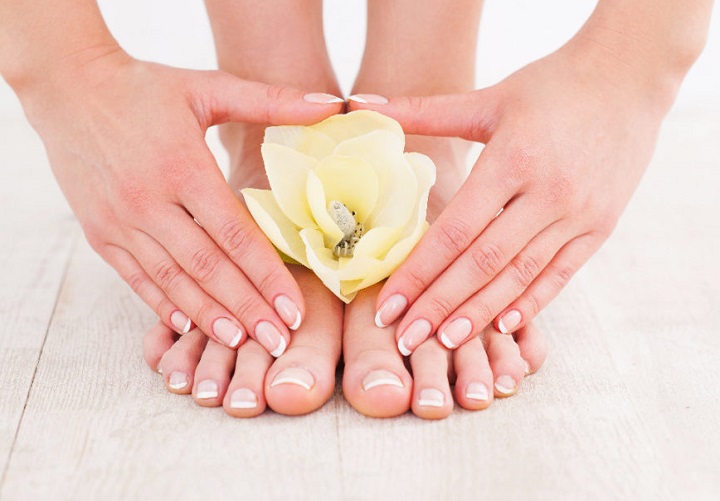In this article we will study the question of how to recognize and distinguish the fungus of nails from injury or vitamin curvature.
Contents
- How to recognize nail fungus: symptoms, stages, types, photos of examples
- How to distinguish nail fungus from injury: causes of deformation, wavyness of the nail plate
- The color of the nail plate will help to distinguish between the nail fungus from the injury or other deviations in the body: photo compared
- How to distinguish the fungus of nails from injury, onycholysis, drank a nail plate, allergies and other diseases?
- Can gel polish cause nail fungus?
- How to determine the nail fungus at home?
- Video: What does the nail fungus look like?
Any deformation of the nail plate is often written off to the nail fungus. But sometimes the treatment of the disease remains unsuccessful, since the reason lies not in a fungal infection, but in a banal injury or incorrectly done manicure. Yes, cuts, incorrect application, removal of gel polish can not only bend the surface of the nails, but also provoke onychomycosis. How to recognize the ailment and distinguish the usual injury from fungal damage, we will consider in this material.
How to recognize nail fungus: symptoms, stages, types, photos of examples
Signs indicating a fungal infection:
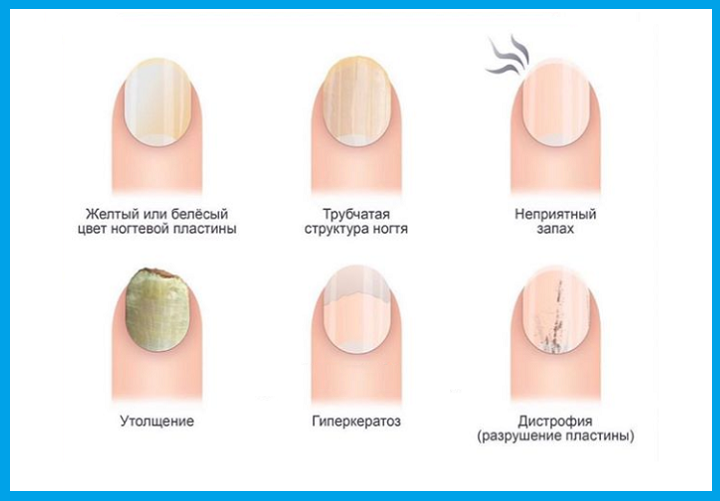
Stages and forms of manifestation:
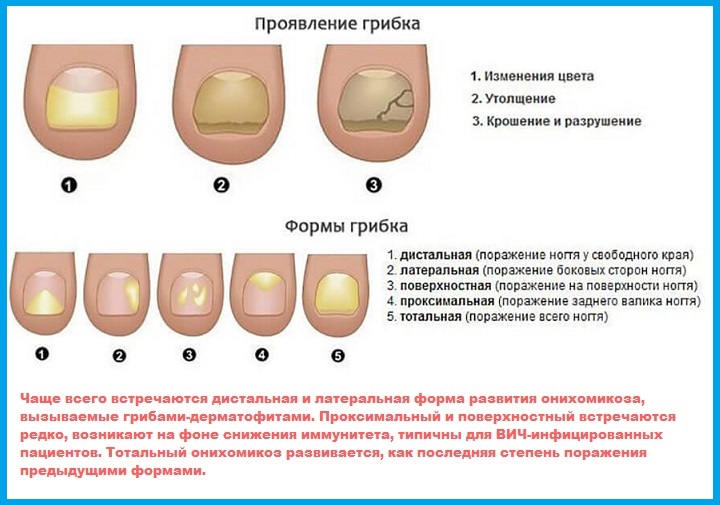
Division into groups behind the thickening of the nail plate:
- Normotorophical
- Hypertrophic
- Atrophic
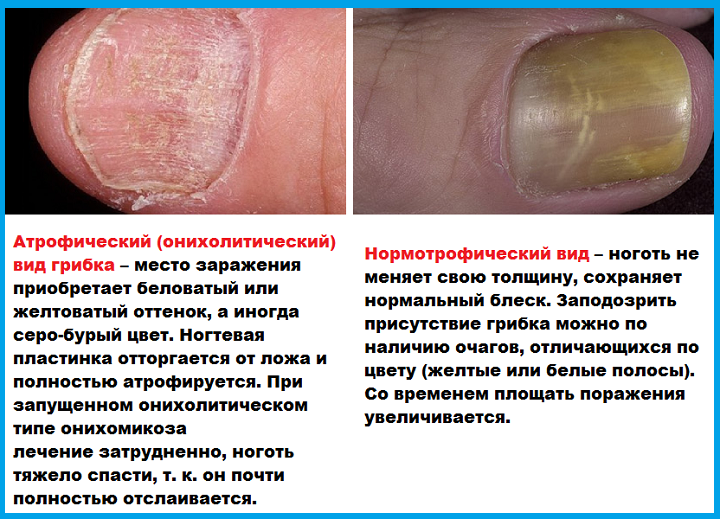

Typically, nail fungus stains the plate in yellowish or brown. But depending on the type of fungal dispute, the shade can vary. For example, the fungus of the genus Trichophyton (trichophytosis) can give a gray -haired nail to the nail, and Trihophyton Schonleiniit (Favus) is a more orange color with brown crusts. And both species are found without concomitant symptom: itching, inflammation or discomfort.
The causative agents of the disease are:
- Dermatophytes - It is more often found by Trichophyton Rubrum (red trichofitron), in the warm time the activity of Trichophyton Mentagrophytes (mentagrofitest) increases, Trichophyton Schoenleini (Favus) is even less common. The group makes the nails white-yellow and fragile;
- Epidermophyton Floccosum (flare -shaped epidermophyte) is often found on the legs, which causes yellowing and detachment of the plate, more often on the I and V fingers of the leg. In Asia countries, purple trichophyte (Violaceum) is common - covers the nails with dark tubercles. A group of fungi microsporum (microsporum) is transmitted through the soil, but is very rare, because Infection begins with the skin.
- Yeast -like fungi - Candida albicans (candidate white) makes the plate gray and deformed, Candida parapsilosis (candidate parapsilosis) The defeat begins with a small spot of dark color. Yeast fungi thin out the plate, over time it begins to exfoliate;
- Mold spores - Amaze less often the rest. Asperqillus niger (aspergillus black) is diagnosed in people with reduced immunity, and Scopulariopsis Brevicaulis (scopularyopsis) provokes injury to the nail. The affected nails usually have a dark color and depart from the bed.
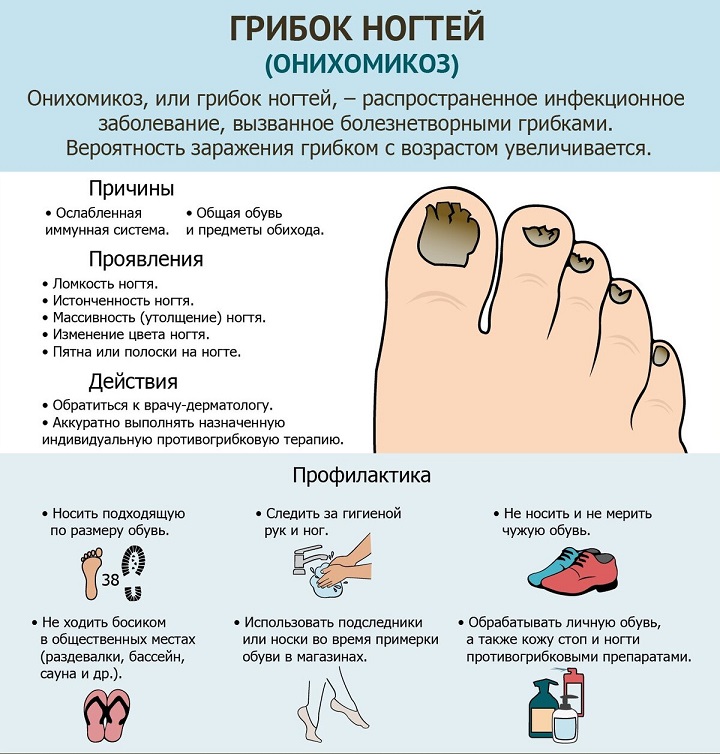
How to distinguish nail fungus from injury: causes of deformation, wavyness of the nail plate
If only deformation of the nail plate is discussed without concomitant symptoms, then this indicates the following reasons:
- the usual trauma(mechanical blow, pinching or bruise of the nail);
- incorrectly executed manicure (rough work with a cutter when removing gel polish or when cleaning the nail plate);
- breakdowns orincorrect cutting cutting,because of what could be the microbes in the area around the nail and disrupt its normal growth as a result of inflammation;
- chemistry (from detergents to poor -quality varnish). Moreover, harmful substances could accumulate in the body for several months.
It is these reasons that most often cause curvature of the nail plate, creating furrows or deepening.
Important: If after the injury you need to wait until the nail recovers, then the wrong cut gel polish, cuts, excessive removal of the cuticle damage the root of the nail-matrix. And then the nail grows in waves, which is very difficult to align.

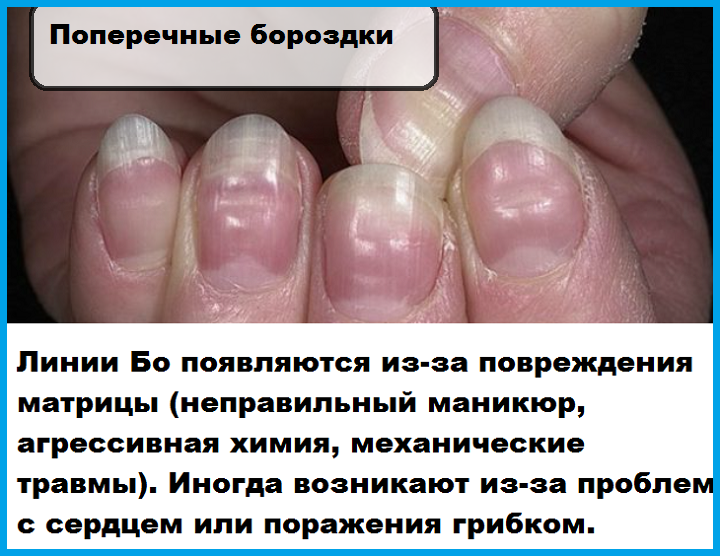
Important: doctors argue that the deformation of the nail plate in about 50% causes a nail fungus - onychomycosis.
However, the reason may be as follows:
- lesion with microbes skin, for example, psoriasis, eczema, flat lichen or prolonged exposure to allergies;
- dietallye consequencesi, exclusion of protein or banal lack of vitamins and trace elements;
- illnessi internal organs - decrease in immunity, liver disease, lungs, gastrointestinal tract, heart and vessels, as well as thyroid gland and joints;
- hormonal disbalance. Especially during pregnancy or after childbirth;
- as a result Strong stress Or improper hands care. For example, the use of acetone to remove varnish on an ongoing basis.
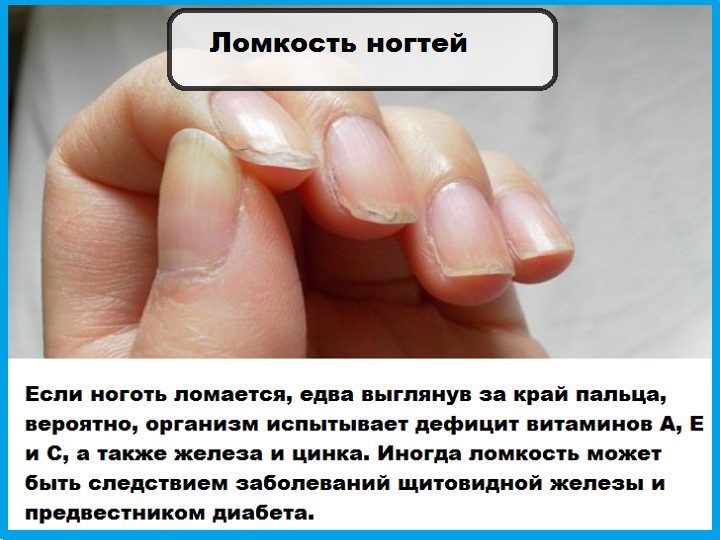
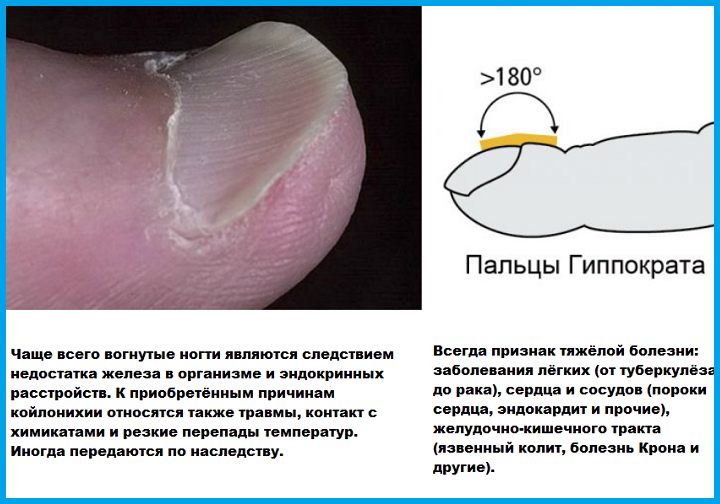
Important: sometimes it is confused with psoriasis fungus, because it is impossible to establish an accurate diagnosis “by eye”, without analyzes.
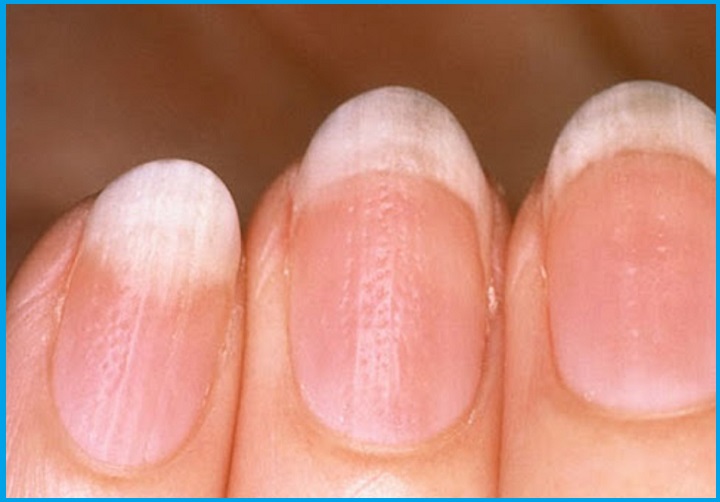
The color of the nail plate will help to distinguish between the nail fungus from the injury or other deviations in the body: photo compared
White spots or leikonichia:
- Small points or stripes are often caused by poor power, injury or malnutrition;
- If the white color captures an increasing part of the nail bed, making the surface loose - this is a fungus of nails;
- Almost complete coloring is white - a signal of cirrhosis. It may also talk about a lack of iron, heart problems or thyroid gland, indicate diabetes;
- A white plate with a grayish tint and complete destruction of the nail is a consequence of psoriasis.
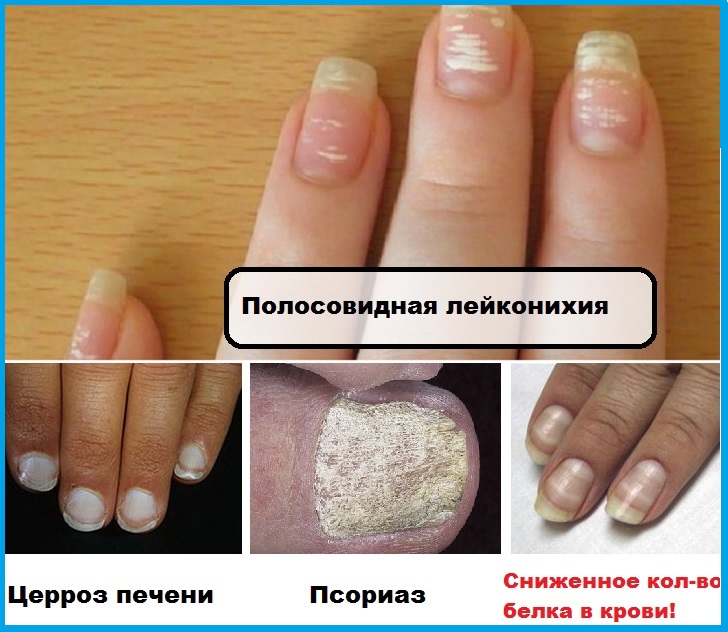
Yellow nails are characteristic of red trichofiton damage, but sometimes they can be a signal:
- Jaundice, tuberculosis, sinus or problems with the thyroid gland;
- A defect in the development of the lymphatic system (in this case, the hole disappears, and the periolous rollers are inflamed);
- Often occurs due to the use of poor-quality varnish or when wearing close, poor-quality shoes.
Brown nails talk about serious problems:
- If this is not a fungal lesion, then it may be a consequence of the disease of addison, candidiasis or chronic renal failure;
- Brown shade can be due to hormonal failures, problems with the thyroid gland or genitals (especially in women);
- Less often, the nails are stained with prolonged use of poor -quality varnish without "rest".
Green color of nails They provoke mold spores or a praying wand. Sometimes color can have a brown, blue or gray tint.
Important: women who have been worn for a long time are often faced with a similar problem. The detachment is especially dangerous, which was not removed in time!
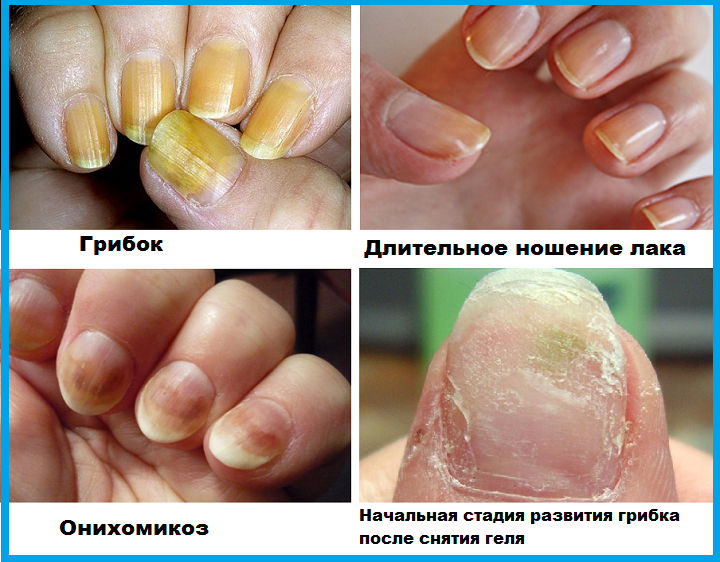
Blue nails often become:
- As a result of an increase in metghemoglobin in the blood. Those. After prolonged use of some drugs or with acute silver poisoning (Argiria), paracetamol, potassium permanganate, aniline dyes, etc.;
- Or when the copper is accumulated in the body and after taking some drugs based on it;
- In some cases, the nails are blue with heart failure (with poor blood circulation).
Black stripes or melanonichia - In fair -skinned people, it signals about digestive problems or the presence of a malignant tumor. In the dark -skinned ones, it does not cause serious concerns.
IMPORTANT: We do not confuse the sudden occurrence of a dark strip on the nails with a sub -gear hematoma in case of injury!
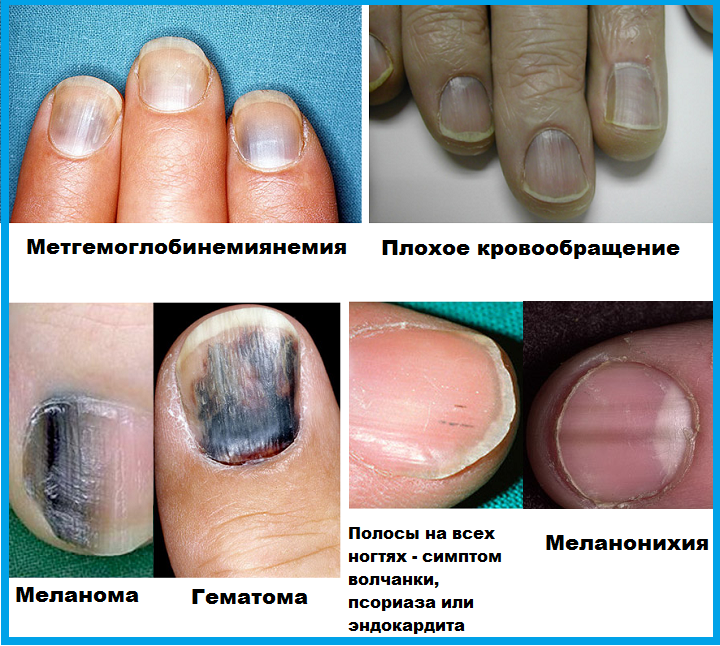
How to distinguish the fungus of nails from injury, onycholysis, drank a nail plate, allergies and other diseases?
- Nail fungus does not stand still - Yellow or dark stripes, areas will capture an increasing area of \u200b\u200bthe nail plate. After the injury, the damaged area brightens and grows.
- The surface each time will become more and more rough and fragile. But, we repeat that if the matrix is \u200b\u200bdamaged, the root of the nail is impaired incorrectly performed manicure, it will grow with waves or rough stripes.
- The fungal infection does not have a lull or remission, Like psoriasis or herpes. It acts slowly, but constantly.
- The fungus causes dryness, Therefore, do not confuse it with eczema, the rash of which contains a serous fluid.
- Unlike allergies and herpes The fungus does not cause swelling and pain. In addition, allergies take place as soon as contact with the allergen is excluded.
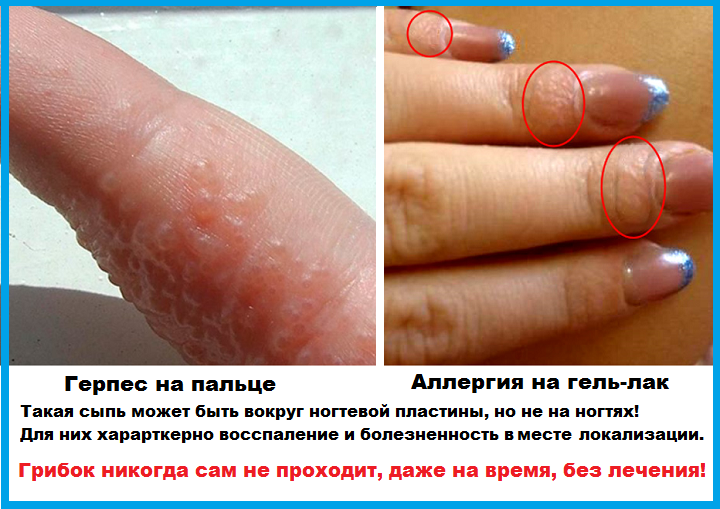
- One of the main features of the fungal infection - smell. Over time, the spores of the fungus provoke an unpleasant odor, especially on the legs.
- Not all, but very often pathogens of fungal infection cause Itching, peeling and redness around the nail roller.
- The fungus never happens on only one finger - if you do not treat, over time, it is captured by the skin area and other phalanxes.
Important: Onicholysis is not a fungus, it is not contagious. The reason for its appearance is a lack of vitamins, trauma, a burn of a nail plate or a long wearing gel polish. But sometimes the discharge of the plate provokes the growth of fungal disputes. In any case, you need to refuse the coating and engage in treatment.
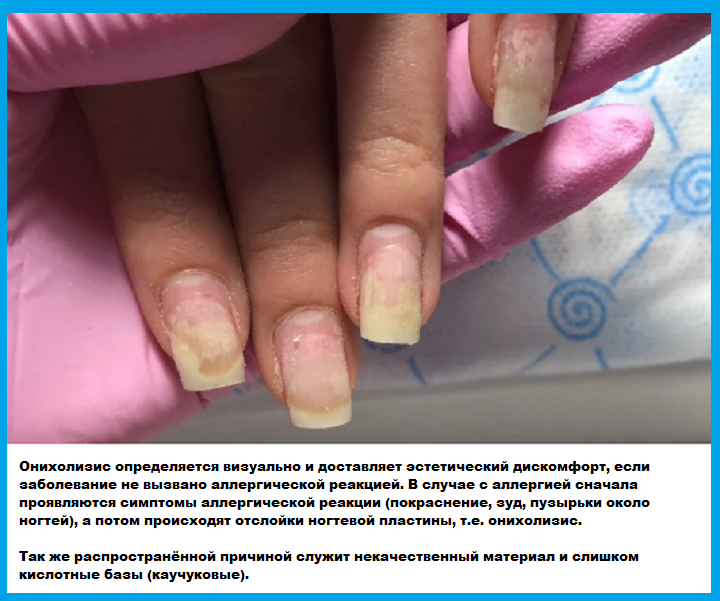
Can gel polish cause nail fungus?
Due to the high popularity and availability of hardware manicure, more problems with nails have appeared. From which the opinion arose that gel polish spoils the nails and provokes a fungal infection.
- The varnish itself does not cause nail fungus! Infection occurs exclusively through a sick person - in a bath, a sauna, through personal belongings, shoes and even a handshake. People with weak immunity are especially susceptible to this, with endocrine and hormonal disorders!
- But! If the master poorly disinfected the tools, It is possible to transfer fungal disputes from another client.
- Onicholysis happens in cases where a coating is worn for a long time-a manicure must be done every 2-3 weeks.
- If the master did not remove on time air pockets and detachments of the old base, That is possible the command of mold fungi, which also provoke the development of onycholysis.
Therefore, follow your personal hygiene - wash your hands more often or treat with antiseptics. And most importantly - choose a responsible and experienced master!
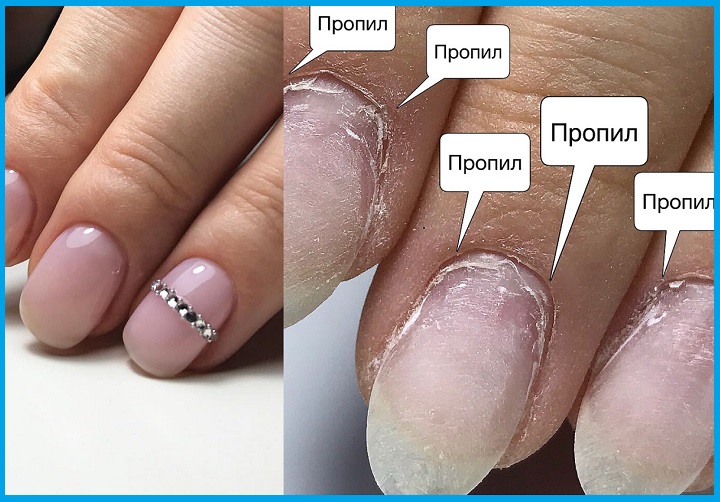
How to determine the nail fungus at home?
At home, you can determine the nail fungus using two tools:
- Potassium permanganate or potassium permanganate. We dilute the powder in warm water, making a light pink shade. We immerse our legs for 7 minutes. If the color of the nail plate has not changed, there is an infection; If the nails are yellowed, there is no fungus.
- Iodine He will indicate only yeast -like fungi, which cause bran shade of lichen. Apply a thin layer for the nail and the site near it, wait for 2 minutes. If the nails have acquired a rich orange color - there is infection; If the color has not changed - everything is in order.
Important: if you notice a color change and deformation of the nail plate, especially with the subsequent distribution to other nails, consult a doctor to take tests to establish an accurate diagnosis and prescribe the correct treatment!
It will be useful for you to read:
- How and how to treat nail fungus at home?
- Why are the nails hard, yellow, crumble?
- Why are the nails on the arms and legs lay: what to do?
- How to quickly grow nails?
- How to remove the extended nails yourself?

